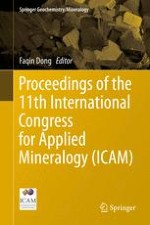2015 | OriginalPaper | Buchkapitel
Veins, Dikes, and Pods of the UAE Mantle Peridotites: Possible Industrial Raw Materials
verfasst von : Sulaiman Alaabed
Erschienen in: Proceedings of the 11th International Congress for Applied Mineralogy (ICAM)
Aktivieren Sie unsere intelligente Suche, um passende Fachinhalte oder Patente zu finden.
Wählen Sie Textabschnitte aus um mit Künstlicher Intelligenz passenden Patente zu finden. powered by
Markieren Sie Textabschnitte, um KI-gestützt weitere passende Inhalte zu finden. powered by
